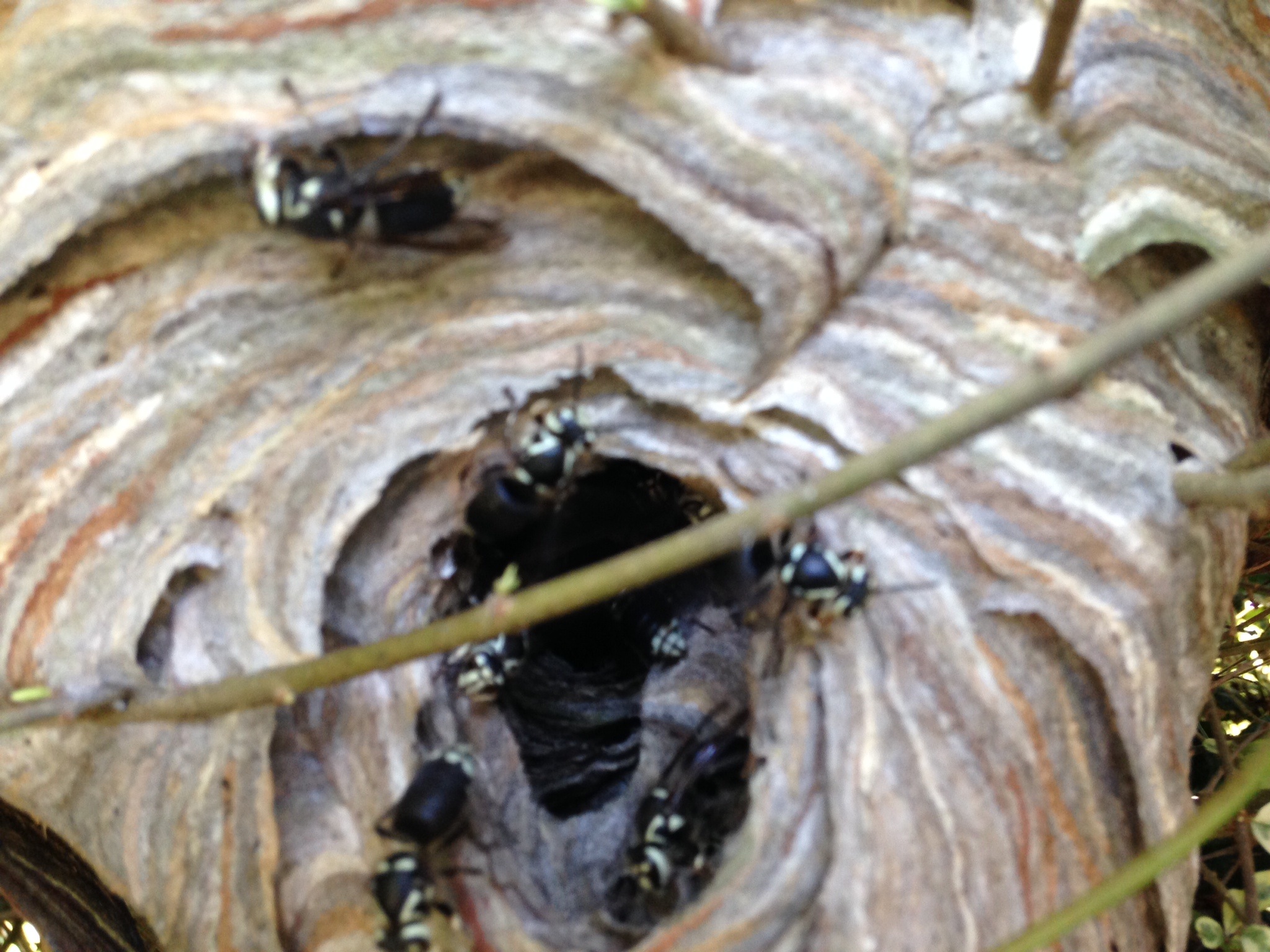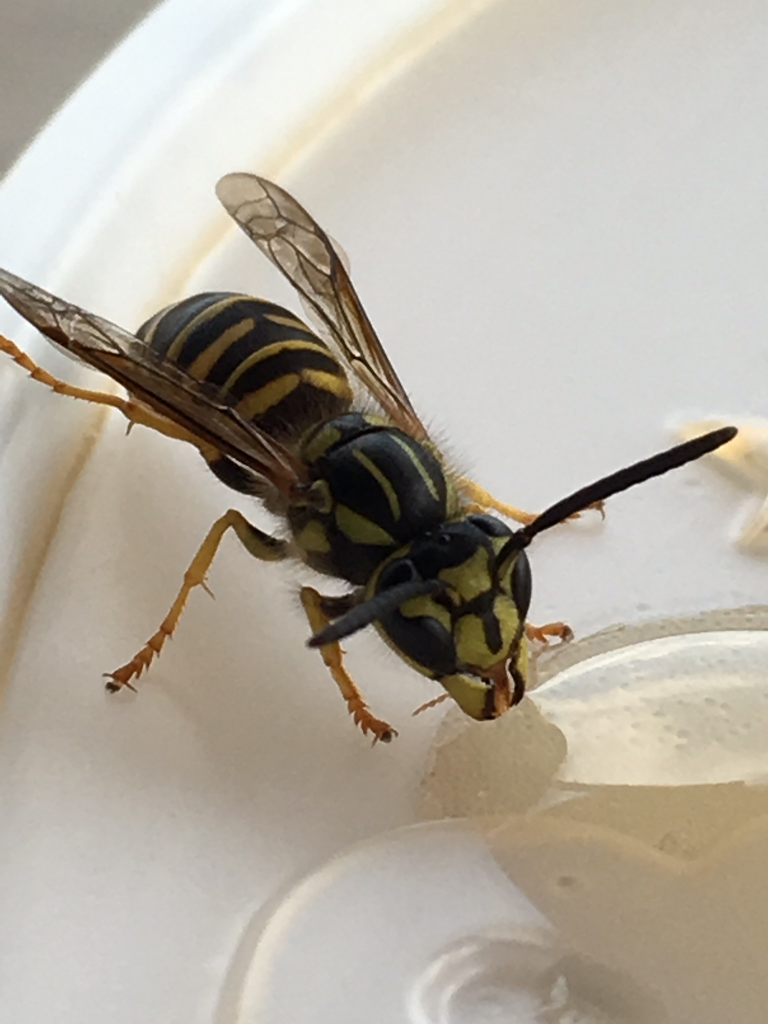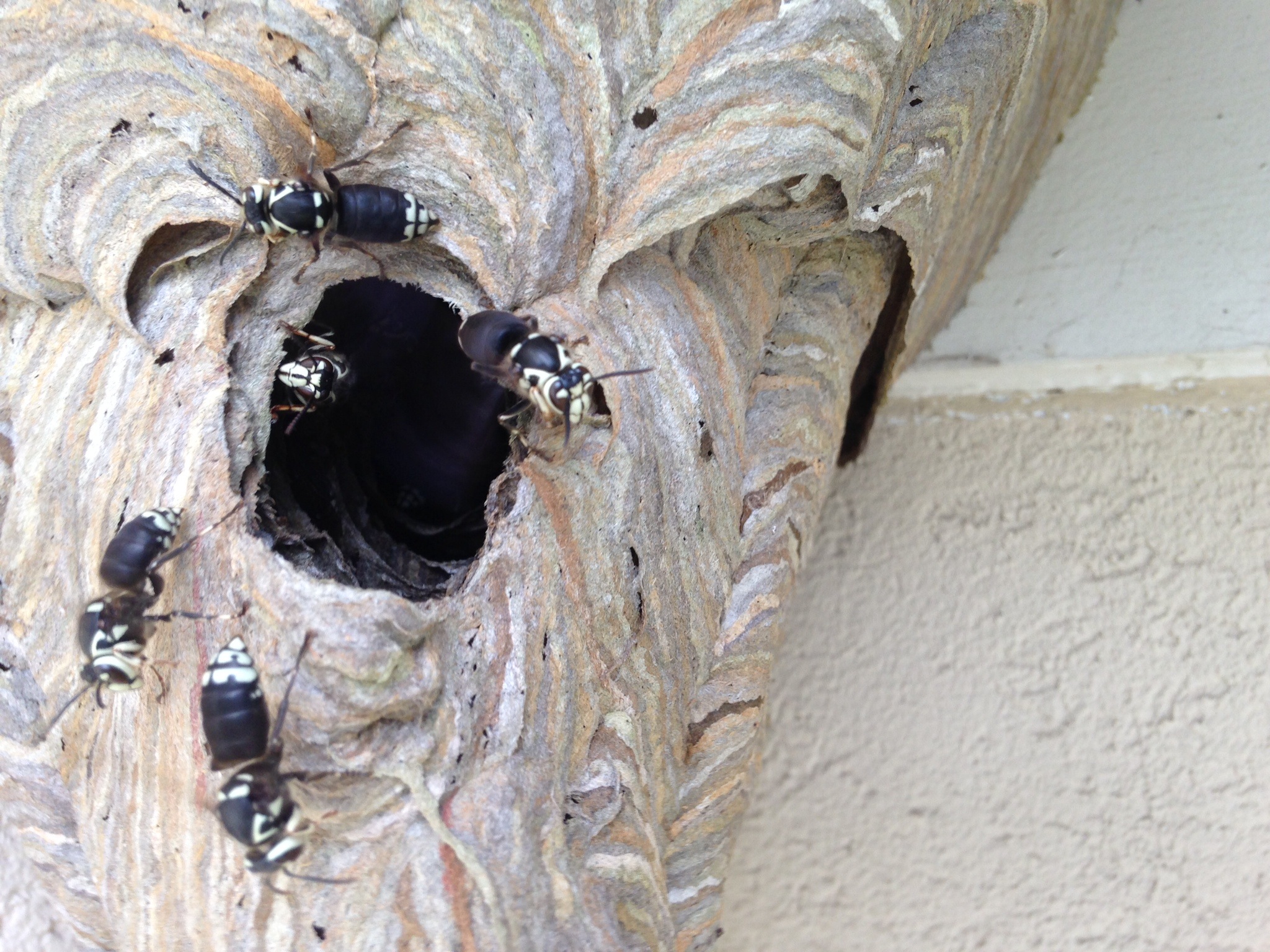
Hornet & Wasp Nest Removal
Hornet & Wasp Removal is one of our most common services during the warmer periods of the year. We strive to keep our Hornet & Wasp Extermination service affordable and to have a fast turnaround so we can get out there quickly and resolve your Hornet or Wasps issues. With our Hornet & Wasp Extermination service we can often take care of them while you are not home, making it one of our most convenient services. With this service, you have the option to choose chemical-free (without the use of pesticides) for a complete physical removal of the hive, making it one of the most effective methods for Hornet or Wasp extermination but since it can take time it can be a little more expensive than our pest control approach with pesticides. The pesticides can take some time, often reaching full effectiveness within a day or two, but since the service is incredibly quick, it saves you money while exterminating the hornets or wasps. In some situations we use both approaches, for example, Hornets or Wasps can build their hive in your wall and even after the complete physical removal of the hive it’s a good idea to apply a small amount of pesticides for the returning workers so we can quickly control the population and get you the results we expect from our Hornet & Wasp extermination service.
Visit our: Hornet & Wasp Removal F.A.Q’s
Hornet & Wasp Removal service highlights
Give us a call, we are here to destroy your questions with answers!
Yellowjacket Nest Removal
We do things a little differently than the average Pest Control Company. We OFFER both Chemical-free hive removal & also a pesticide solution to resolve the issue with the hive. If you opt for the Chemical-Free solution, our Technicians will remove the Yellowjacket hive (if accessible) completely including the Foundress’ and/or Queen(s) and well as many of the offending insects as possible. We do not have to worry about the colony surviving & re-establishing the hive because we took it with us.
Yellowjackets nests are most commonly found underground. Sometimes we stumble upon Aerial Yellowjacket hives under eaves, decks, and doorways. We can even locate the hive if you are unsure of where it is located. We would never ask you to track it down and risk getting stung. Let us take the liberty & since we are in protective clothing we do not risk getting stung repeatedly.
Yellowjackets get alarmed from simple vibrations of someone simply walking by or mowing the lawn near the hive. The attack begins! Let our team of Yellowjacket Specialists completely remove the hive for you. We only give price ranges over the phone for hive removals since it is sight unseen.
What to expect when you hire our team of Professionally Trained, Licensed by the Georgia Department of Natural Resources, Bee & Hornet Hive Removal Experts to remove the Bald-faced Hornet Nest or European Hornet Nest:
- If Chemical-free hive removal is the option chosen then we remove the entire hive; queen, hive, pupae, and as many workers as possible.
- We are very responsive to getting you on the schedule quickly.
- You do not have to be home for us to remove the nest. The office can take credit card payments over the phone or if we quoted the exact price you can leave a check.
WARNING! AFTER THE HIVE IS REMOVED!
Regardless if we provide a chemical-free hive removal or we treat it with pesticides (commonly used is pesticide in a dust form) afterwards there will be some hunters that come back to discover their hive is gone. They will stick around for a couple of days, dumbfounded and lost. After about a week they will have either left, died off or been eaten by predators. If pesticides were used it usually takes a little bit for the full effect. Please expect activity either way for about a week.
Bald-faced Hornet Nest Removal
Bald Faced Hornet Nest Removals or Bald Faced Hornet Hive Removals are an everyday problem here in North Georgia. If we compare the nuisance calls to European Hornet Nest Removal in our area it is 20:1, the winner is Bald-faced Hornets. Bald-faced Hornets are some of the most aggressive stinging insects that we remove. Unlike the Bee or Yellowjacket stings, these pack a heck of a punch.
Bald-faced hornets nests are mummy-looking hives that are hanging from structures like eaves, doorways & trees. They usually have guards in the opening watching for potential threats. As soon as you approach or break the flight path — an alarm is sounded. Beware!
Just as seen in this picture Bald-faced Hornets will take refuge in just about any crack or crevice. We come out in protective clothing and remove the entire hive when possible, Queen and hive structure. With our Chemical-Free Hive removal method, it is impossible for the colony to return since we take the hive with us. Sometimes it is less costly for us to treat the hive instead of removing it, we will discuss options. Either way, we never just spray the hive and run. If we do resort to pesticide application we deeply penetrate the hive to destroy all of them.

Yellowjacket Nest Removal
We do things a little differently than the average Pest Control Company. We OFFER both Chemical-free hive removal & also a pesticide solution to resolve the issue with the hive. If you opt for the Chemical-Free solution, our Technicians will remove the Yellowjacket hive (if accessible) completely including the Foundress’ and/or Queen(s) and well as many of the offending insects as possible. We do not have to worry about the colony surviving & re-establishing the hive because we took it with us.
Yellowjackets nests are most commonly found underground. Sometimes we stumble upon Aerial Yellowjacket hives under eaves, decks, and doorways. We can even locate the hive if you are unsure of where it is located. We would never ask you to track it down and risk getting stung. Let us take the liberty & since we are in protective clothing we do not risk getting stung repeatedly.
Yellowjackets get alarmed from simple vibrations of someone simply walking by or mowing the lawn near the hive. The attack begins! Let our team of Yellowjacket Specialists completely remove the hive for you. We only give price ranges over the phone for hive removals since it is sight unseen.
What to expect when you hire our team of Professionally Trained, Licensed by the Georgia Department of Natural Resources, Bee & Hornet Hive Removal Experts to remove the Bald-faced Hornet Nest or European Hornet Nest:
- If Chemical-free hive removal is the option chosen then we remove the entire hive; queen, hive, pupae, and as many workers as possible.
- We are very responsive to getting you on the schedule quickly.
- You do not have to be home for us to remove the nest. The office can take credit card payments over the phone or if we quoted the exact price you can leave a check.
WARNING! AFTER THE HIVE IS REMOVED!
Regardless if we provide a chemical-free hive removal or we treat it with pesticides (commonly used is pesticide in a dust form) afterwards there will be some hunters that come back to discover their hive is gone. They will stick around for a couple of days, dumbfounded and lost. After about a week they will have either left, died off or been eaten by predators. If pesticides were used it usually takes a little bit for the full effect. Please expect activity either way for about a week.
Hornet & Wasp Removal F.A.Q’s
Q) How do professionals get rid of wasps?
A) It depends on the hive and the location. Mostly pesticides, but other times we do a complete removal.
Q) Can I remove a wasp’s nest myself?
A) Absolutely. Many people do. Professionals are called in when a hive removal isn’t desirable or the homeowner lacks the motivation to DIY.
Q) What makes wasps go away?
A) Human Intervention! Pesticides or completely destruction of the hive.
Q) What is the fastest way to get rid of wasps?
A) Pesticide application or removal of the hornet nest or hive.
Q) How do you get rid of wasps when you can find the nest?
A) When you can find them, it is easy. Either spray the hornets nest with pesticides or remove the hive completely. Home Depot type stores sell hornet spray which propels the pesticides a FAR distance.
Q) Will wasps come back after you’ve sprayed the nest?
A) Generally, if the nest is thoroughly treated with insecticides, wasps should not return to the same nest. However, if any wasps survive or if the nest is not completely destroyed, there is a possibility of them returning or rebuilding in the area.
Q) What smell do wasps hate?
A) Supposedly Wasps dislike various strong scents, including peppermint, eucalyptus, and citronella. Using these scents around your home are supposed to help deter wasps.
Q) What kills wasps instantly DIY?
A) Besides Hornet Spray? We’ve seen on google that a solution of soap and water can kill wasps on contact. The soap clogs their breathing pores, causing them to suffocate.
Q) What is the best killer for wasps?
A) The best wasp killer is a commercially prepared insecticide specifically designed for wasps and hornets. Look for products labeled for use against these pests and follow the instructions closely.
Q) Will WD-40 get rid of wasps?
A) While WD-40 can kill wasps by suffocating them, it is not recommended as a long-term solution for wasp control. It’s better to use products specifically designed for pest control.
Q) How long do wasps remember you?
A) We have not been able to get a straight answer from them directly so we have had to resort to researching this. Supposedly wasps have a limited memory for individual faces and are unlikely to remember a person over long periods. Their aggressive behavior is more instinctual than personal. Thank goodness or none of us at Southern Wildlife would still be alive after 15 years of destroying hives.
Q) Can I spray Raid on a wasp nest?
A) Yes, Raid and similar insecticides can be used on wasp nests. It is important to use the product according to the label instructions and take precautions to avoid stings. However, Raid does not have the jet spray like spray designed for hornet and wasp nests.
Q) Does leaving old wasp nests deter wasps?
A) Leaving an old, inactive wasp nest in place can sometimes deter new nests, but this is not a reliable method for wasp control. It’s better to remove old nests and take preventive measures. However, we’ve heard that Bald Faced Hornets are hyper-territorial and if they see a hive they won’t build one within eye-shot. We have personally removed two active hives on the same section of a home. So with pests & wildlife you can never say never.
Q) What time should I spray my wasp nest?
A) The best time to spray a wasp nest is in the evening or early morning when wasps are less active. This reduces the risk of being stung.
Q) How do I stop wasps from returning?
A) Prevent wasps from returning by sealing entry points, removing food sources, and using wasp deterrents around your property.
Q) What time of day are wasps most aggressive?
A) Wasps can be more aggressive during the day, especially in hot weather or when their nest is disturbed. They are less active and aggressive during cooler parts of the day.
Q) What happens to wasps after a nest is destroyed?
A) After a nest is destroyed, surviving wasps may attempt to rebuild in the area. It’s important to monitor for new nest construction and take preventive measures.
Q) Should you knock down a wasp nest or spray it?
A) Spraying a wasp nest with an appropriate insecticide is generally safer and more effective than knocking it down. If you choose to knock down a nest, do so with great caution and protective gear. Destroy the hive when it is down or they will just rebuild.
For professional assistance with hornet nest removal or any wildlife and pest control needs, you can reach out to Southern Wildlife Management at (678)935-5900 for expert help.
We have included a few articles below that are related to Yellowjackets and Baldfaced Hornets and are quick reads.


